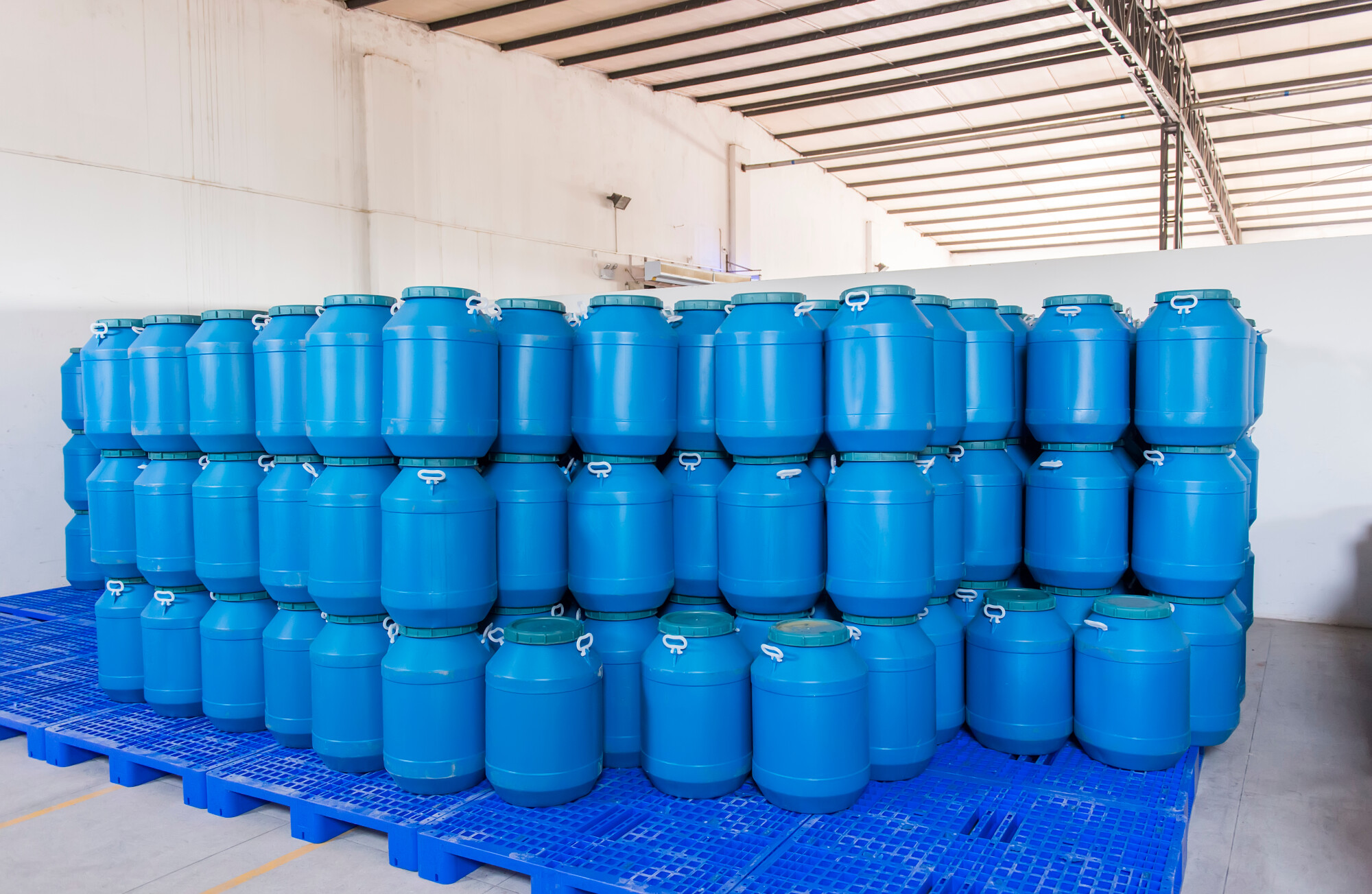When it comes to handling common hazardous materials, every second counts. And you are always potentially one small step away from a full-blown emergency.
Safe storage of hazardous substances is a topic of paramount importance. It affects many industries, from healthcare to manufacturing, and can significantly impact your business.
This article explores some of the intricacies of hazardous material storage requirements and standards.
We’ll help you decode the SDS and prepare for things like audits. And we’ll help you understand how to stay compliant. Join us as we explore this complex but fundamental world of hazmat safety.
Hazardous Materials: What You Need to Know
In the workplace, you’ll probably find hazardous materials called hazmat. But the meaning is the same.
This term means any substance that could risk health, safety, property, or the environment. It can be a solid, liquid, or gas. The UN splits these into nine subclasses with unique risks and handling requirements.
For example, Class 1 materials include explosives such as dynamite or fireworks. Class 2 materials are propane and aerosols. These may be flammable, non-flammable, or toxic.
Other classes include flammable solids, oxidizing, and toxic and infectious substances. There are also groupings for radioactive materials, corrosive substances, and miscellaneous dangerous goods.
Even if you haven’t seen these labels at work, you might have spotted them before on parcels. Labeling is a way of keeping people safe by providing appropriate warnings.
They protect people from accidents and disasters like fire, explosions, chemical burns, or environmental chemical spills. Labeling and handling hazmat according to specific protocols will keep you, your team, and the environment safe.
Safe Hazardous Material Storage
It’s crucial that you correctly store hazardous material for several reasons.
First, the physical, chemical, or biological properties could risk people’s health. They could also endanger buildings and the environment. Inadequate storage may lead to a risk of fire or other disasters.
Second, if you store these poorly, you risk someone mishandling them from accidental exposure. An example of this is failing to keep chemicals in a secure place where the wrong person could access them.
If you do this, you risk major health issues like burns, respiratory problems, and cancer. As a business, that puts you at risk of getting sued by staff or customers.
There may be other financial consequences, too, such as cleanup costs, fines, and reputational damage. In short, paying for the proper storage will help protect you from broader problems.
What Are Safety Data Sheets (SDS)?
Safety Data Sheets were once known as Material Safety Data Sheets (MSDS). These are crucial documents that outline all the relevant information on hazardous substances.
They are required as part of legislation around handling and storing hazmat.
These sheets contain the following:
- A substance’s identification
- Known hazards
- Composition
- First-aid measures
- Fire-fighting measures
- Accidental release measures
- Handling and storage
- Exposure controls
- Physical and chemical properties
- Stability and reactivity
- Any other relevant data
The purpose of these sheets is to ensure that any workplace personnel stays informed on the risks of this material.
It will outline everything they need to know, including handling, storing, and transporting these items. And by using these sheets, you take the relevant precautions against accidents and exposure.
Hazardous Material Storage Requirements and the SDS
You’ll find storage requirements in Section 7 of the Safety Data Sheets. It provides official guidelines on how to store the substance safely. It covers details such as:
- Storage conditions
- Recommended temperature
- Humidity levels
- Ventilation requirements
This section will also outline incompatible substances that you should never store together. That could be because of a risk of a chemical reaction that could generate fires, exposures, or toxic gasses.
For instance, you might always keep flammable materials away from oxidizing agents.
In Section 7 of the SDS, you’ll also have information on the containers or container systems you must use for safe storage. These will help prevent problems like leaks or spills.
Containers and Labelling of Hazardous Substances
You must follow the guidelines in the SDS about safe container selection. The containers must be durable and in excellent order, without defects. They’ll need to be fully compatible with the substance.
And you’ll need containers that can withstand temperature and pressure changes.
Depending on the substance, the most popular material for containers includes stainless steel, glass, and high-density polyethylene. When you’ve selected a container, you’ll need to use the SDS to label the substance correctly.
Labels must indicate the nature and level of the hazard. They should include the substance’s name and hazard pictograms. You’ll also need precise wording like ‘Danger’ or ‘Warning.’
You may need to add a specific precautionary statement about the hazard, plus the supplier’s details. Following labeling guidelines means anyone who handles that container will fully understand the risks.
Special Considerations
Some of the most dangerous hazardous material needs specific storage considerations. You must be aware of these and the specific rules.
For example, you must store explosives in specially designed facilities. These environments must be away from heat sources and flammable substances.
Gases under high pressure need cylinder storage and temperature control. Biohazards and infectious agents need biosafety cabinets and special refrigeration units. You must protect them from any contamination risk.
Location and Environment
Location and environment are two critical factors in safe hazmat storage. You’ll need secure facilities that are away from specific environmental features such as:
- Densely populated areas
- Lakes and sea
- Areas prone to natural disasters
The interior environment also needs to tick specific criteria. They should be a fit-for-purpose design with safety and the forefront. That includes regulated temperature and humidity control.
They must offer proper ventilation to stop harmful vapors from accumulating. It must show the highest levels of security but is easy to access for authorized personnel.
That layout might include secure segregation to keep incompatible substances apart. But it will also aid in the easy movement for safely transporting substances or for external bodies to visit and inspect the storage facility.
You must adhere to regular inspections, and the site should be appropriately maintained. That means health and safety checks too.
Finally, the site must have an emergency procedure in place. That should include having an emergency kit on site, including fire extinguishers, spill kits, and PPE (personal protective equipment).
Regulatory Standards and Compliance
In the US, hazmat handling is overseen by several regulatory bodies. That includes:
- Occupational Safety and Health Administration (OSHA)
- The Environmental Protection Agency (EPA)
- The Department of Transport
Together, these bodies oversee the standards that cover many aspects of hazmat. And that will include handling, storing, and transporting such substances.
They also have the responsibility to monitor and inspect companies. And they have the power to issue penalties or legal consequences for non-compliance. So it’s essential to keep up to date with any new standards issued by these bodies.
Occasionally, new rules will enter regulatory compliance as circumstances change. For example, as these bodies identify unknown risks from a substance, the body may issue updated guidelines.
Planning and Training for an Emergency Response
Your facility must offer a comprehensive emergency response plan. This will ensure you have organized steps to deal with a hazardous material accident.
For example, an accident might include chemical spills, human exposure, or localized fire.
This response plan must include the following:
- First aid procedures
- Evacuation Plans
- Methods for containing and mitigating the hazard
You need to rehearse this plan as a drill at regular intervals and train any new personnel in these emergency procedures.
The plan must also outline roles and responsibilities during an incident. Familiarize your staff with these roles so they know their specific tasks and expectations during an actual emergency.
You’ll also want to train employees on recognizing hazards, as well as train them on how to interpret the SDS. Training must also include the correct use of PPE, spotting an issue, and disposing of hazardous chemical waste.
Routine Inspections and Audits: What You Need to Know
You must familiarize yourself with what happens during inspections and audits. Failing these could lead to potential fines or worse. So prepare yourself with the knowledge you need to pass them.
Checks will include things like:
- Container deterioration
- Inadequate or incorrect labeling
- Improper storage practice
- Poor security procedures
- Non-compliance with regulations
The auditors will check all aspects of your safety management system beyond your hazmat storage.
If issues arise in an audit, promptly address and remedy them. Keep records of your changes and have strict controls for your admin to ensure your paperwork is in good order.
Hazardous Material Storage: Putting Safety First
When handling hazardous material, knowledge and compliance are your best assets. Staying in line with regulatory standards will ensure a safe and secure business.
But there is always more to learn and ways to improve your material storage.
Online SDS offers an effective way to simplify your SDS processes. You’ll get digitized SDSs and the ability to conduct in-depth analysis. Find out more by checking out our solutions here.


